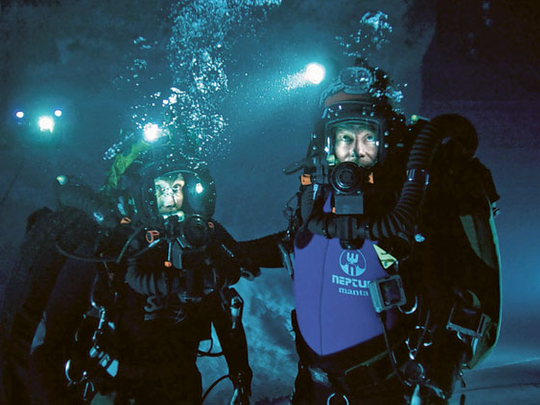

The exploitation of a luscious 3D-enriched natural landscape, only to be foiled by an infuriated Mother Nature is at the precipice of becoming a James Cameron trope. Our American businessman-hero, Carl Hurley, is here to take advantage of this extraordinary cave system for financial gain. Like “Avatar”, perhaps the most blatant thematic point of the first 20 minutes seems to be that you really just shouldn’t mess with nature. But as the film launches, there’s a bit of Cameron-esque idealism that comes through almost before the showy visuals become noticeable. The obvious starting point is, of course, the use of 3D. Having any camera near that much water is problematic, the particular issue that comes up when recording 3D, stereo space, is that the water may splash one lens, but not the other.Playing “spot the Cameron” is a fun way to pass the time during a screening of this perhaps otherwise uninteresting undersea spelunk. As mentioned, they found the physical needs of the story - working with actors on cables in dangerous situations, the heat, the cold, and of course working in and around (literally) tons of water, to be the most difficult aspect of physical production. They shot most of the film on a stage, with the underwater work done in a tank, as it was impractical for them to attempt shooting an ambitious 3D production on locations where control is limited.

The team had visited the set of Avatar and were aware of some of the challenges inherent in working with 3D, and as such, they built their sets specifically to work around said challenges. Take a look at the trailer below, and note the final moments, as Josh seeks even the smallest air pockets as he clings to life this was the most effective scene that we were able to see.Īs to the physical production, Sanctum, literally, used the same cameras that were utilized on Avatar, so they were working with 2007 technology.


 0 kommentar(er)
0 kommentar(er)
